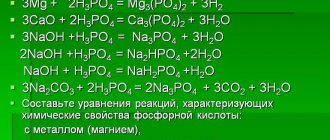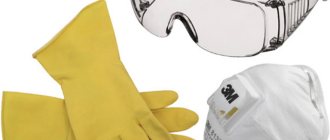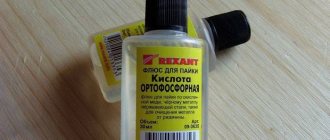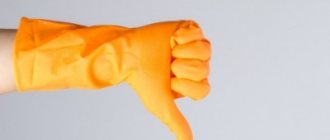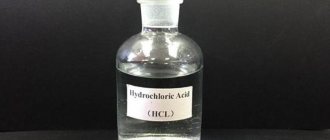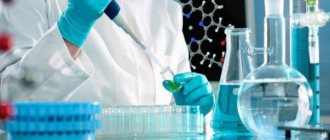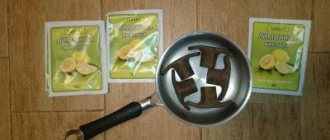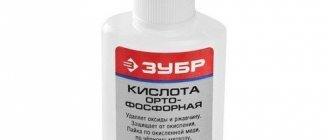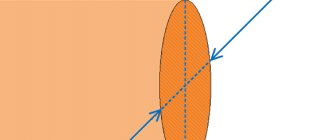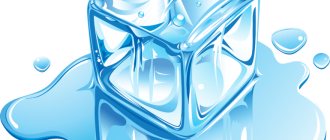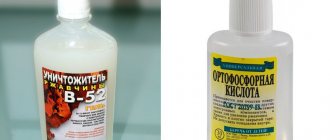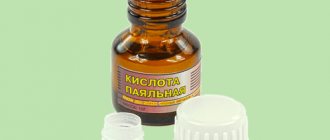More than one generation of chemists argued about which acid is the strongest. At different times, this title was given to nitric, sulfuric, and hydrochloric acid. Some believed that there could be no compound stronger than hydrofluoric acid. Recently, new compounds with strong acidic properties have been obtained. Perhaps it is among them that the strongest acid in the world is found? This article examines the characteristics of the most powerful persistent acids of our time and gives their brief chemical characteristics.
Properties of acids
All acids have certain chemical properties that can be called common to a given class of chemical compounds.
- The ability to interact with metals, releasing hydrogen.
- The ability to interact with bases, releasing salts.
- The ability to change the color of indicators - for example, cause litmus paper to turn red.
In all of the above properties, another “skill” of any known acid is manifested - this is the ability to give up a hydrogen atom, replacing it with an atom of another chemical substance or a molecule of any compound. It is this ability that characterizes the “strength” of the acid and the degree of its interaction with other chemical elements.
Super acid
The word “superacid” was introduced into the chemical dictionary in 1927, with the help of the famous chemist James Conant.
The standard for the strength of this chemical compound is concentrated sulfuric acid. A chemical or any mixture that is more acidic than concentrated sulfuric acid is called a super acid. The value of a superacid is determined by its ability to impart a positive electrical charge to any base. The corresponding H2SO4 indicator is taken as the basic parameter for determining acidity. Among strong acids, there are substances with rather unusual names and properties.
Substance concentration
Chemists often have to solve problems that involve determining the percentage of pure acid present in a solution. In such cases, the value sought is concentration.
This is a value that allows you to determine the quantitative composition of a liquid chemical . For example, in order to find out how much pure sulfuric acid is in a dilute solution, you need to pour a small amount of the mixture into a measuring cup, weigh it and determine the desired value using the density table. This table is used in calculations, since density is inextricably linked with concentration.
Known strong acids
The most famous acids from the inorganic chemistry course are hydroiodic (HI), hydrobromic (HBr), hydrochloric (HCl), sulfuric (H2SO4) and nitric (HNO3) acids. All of them have a high acidity index and are able to react with most metals and bases. In this series, the strongest acid is a mixture of nitric and hydrochloric acid, called “aqua regia”. The formula of the strongest acid in this series is HNO3+3 HCl. This compound can even dissolve precious metals such as gold and platinum.
Oddly enough, hydrofluoric acid, which is a compound of hydrogen with the strongest halogen - fluorine, was not included in the contenders for the title of “The Strongest Acid in Chemistry”. The only feature of this substance is its ability to dissolve glass. Therefore, such acid is stored in polyethylene containers.
pH value
When carrying out dissociating reactions, it is important to correctly determine the acidity level of the water. To express it quantitatively, a pH value is used, called the strength, weight or potential of hydrogen. It allows you to measure the activity of hydrogen ions. If the pH level exceeds 7, then the substance has acidic properties, but if this indicator is less than 7, then the properties are basic.
Determination methods
The results of chemical reactions in which any substance participates directly depend on the level of its acidity. That’s why chemists always measure this indicator.
There are several methods for determining pH:
- Instrumental method. In this case, a pH meter is used. This device transforms the concentration of protons in a liquid into an electrical signal.
- Indicators. These are substances that change color depending on pH. The use of various indicators allows you to obtain fairly accurate data on the level of acidity.
- Salt. A salt is a compound of ions that dissociates completely in a weak aqueous solution. To determine the acid-base properties of a saline solution, first of all, you need to establish and study the properties of the ions in the solution.
Buffer solution
A buffer solution is a substance characterized by the presence of a constant concentration of hydrogen ions.
When a strong acid or the same base is added in small doses, these solutions retain their original acidity level.
To prepare such a mixture, you need to mix a weak acidic substance or base with an appropriate salt.
When preparing a buffer solution, the following factors must be considered:
- The range of acidity levels at which a substance will become effective.
- The capacity of the solution, that is, how much of a strong acidic compound or base can be added to the mixture without changing its pH.
- When combining substances, there should be no reactions that could affect the composition of the solution.
Strong organic acids
Contenders for the title “The Strongest Acid in Organic Chemistry” are formic and acetic acids. Formic acid is the strongest in the homologous series of saturated acids. It got its name due to the fact that some of it is contained in the secretions of ants.
Acetic acid is slightly weaker than formic acid, but its distribution spectrum is much wider. It is often found in plant juices and is formed during the oxidation of various organic matter.
Recent developments in the field of chemistry have made it possible to synthesize a new substance that can compete with traditional organic substances. Trifluoromethanesulfonic acid has an acidity index higher than that of sulfuric acid. Moreover, CF3SO3H is a stable hygroscopic liquid with established physicochemical properties under normal conditions. Today the title of “Strongest Organic Acid” can be assigned to this compound.
Many may think that the degree of acidity cannot be significantly higher than that of sulfuric acid. But recently, scientists have synthesized a number of substances whose acidity parameters are several thousand times higher than those of sulfuric acid. Compounds obtained by reacting protic acids with Lewis acids have abnormally high acidity values. In the scientific world they are called: complex protic acids.
Consequences and prevention
Acid poisoning is often fatal. If treatment is started on time, a favorable prognosis is possible, but in many cases the person remains disabled. The action of all acids negatively affects the condition of the digestive tract, the brain and nervous system suffer.
Intoxication can be avoided by being careful when working with acids. Toxic substances should not be left in places accessible to children and animals. When using toxic compounds, wear protective clothing, hide your eyes behind glasses, and wear gloves on your hands.
The most terrible and dangerous acid is not available to the common man. However, it is important to be careful when using such substances in laboratories. If signs of poisoning occur, you must immediately contact a medical facility.
Magic acid
Yes. Everything is correct. Magic acid. That's what it's called. Magic acid is a mixture of hydrogen fluoride or fluorosulforonic acid with antimony pentafluoride. The chemical formula of this compound is shown in the figure:
Magic acid received this strange name at a Christmas party for chemists that took place in the early 1960s. One of the members of J. Olah's research group showed a funny trick by dissolving a wax candle in this amazing liquid. This is one of the strongest acids of the new generation, but a substance that will surpass it in strength and acidity has already been synthesized.
Beginning of impact
The peak concentration of the substance occurs in the second or third hour after administration. At first it may seem to a person that the acid did not affect him. However, already in the third hour, visual hallucinations, illusions, and distortion of the angle of vision will begin to appear.
It is difficult for a person to perceive bright light or saturated colors of objects. At the beginning of the drug's effect, flashes may appear before the eyes, the contours of surrounding objects begin to glow and blur. A little later, true hallucinations appear, which are sometimes frightening.
The strongest acid in the world
Carborane acid is carborane acid, which is by far the strongest compound in the world. The formula of the strongest acid looks like this: H(CHB11Cl11).
This monster was created in 2005 at the University of California in close collaboration with the Novosibirsk Institute of Catalysis SB RAS.
The very idea of synthesis arose in the minds of scientists along with the dream of new, hitherto unseen molecules and atoms. The new acid is a million times stronger than sulfuric acid, yet it is not at all aggressive, and the strongest acid can easily be stored in a glass bottle. True, over time the glass does dissolve, and with increasing temperature the rate of this reaction increases significantly.
This amazing softness is due to the high stability of the new compound. Like all acidic chemicals, carborane acid reacts readily, donating its only proton. In this case, the acid base is so stable that the chemical reaction does not proceed further.
Purchase
If possible, purchase diluted acids for the laboratory. Compared to concentrated acids, dilute acid solutions are easier and safer to use, store and handle. When working with solutions, you will not lose valuable preparation time.
Always buy acid in small quantities. In this case, the acid will not deteriorate ahead of time, and the storage and processing process itself will become safer and easier. An acid spill of 100 ml is much easier to clean up than a spill of 2.5 liters.
Always buy concentrated acids in glass bottles with a protective PVC coating. If dropped, such bottles will not break, and acid will not spill out of them. PVC creates a kind of plastic protective shell, which significantly reduces the risk of spills and damage. PVC coating may discolor over time, especially if exposed to hydrochloric acid fumes. This color change does not affect the PVC coating or the quality of the acid inside the bottle.
Chemical properties of carborane acid
The new acid is an excellent H+ proton donor. This is what determines the strength of this substance. A solution of carborane acid contains more hydrogen ions than any other acid in the world. In a chemical reaction, SbF5, antimony pentafluoride, binds fluorine ylon. In this case, more and more hydrogen atoms are released. Therefore, carborane acid is the strongest in the world - the suspension of protons in its solution is 2 × 1019 times greater than that of sulfuric acid.
However, the acid base of this compound is amazingly stable. The molecule of this substance consists of eleven bromine atoms and the same number of chlorine atoms. In space, these particles form a complex, geometrically regular figure, which is called an icosahedron. This arrangement of atoms is the most stable, and this explains the stability of carborane acid.
Main classification
Most often, acidic substances are divided into oxygen-containing and oxygen-free. The composition of the latter compounds differs in that they do not contain oxygen, but contain hydrogen. In this regard, their names are always supplemented with the word “hydrogen”. For example, hydrogen chloride, hydrogen sulfide.
In addition, acids are classified according to the number of hydrogen atoms.
So, they are divided into the following types:
- monobasic;
- dibasic;
- tribasic.
But there are also organic acids, that is, organic substances that exhibit properties inherent in acidic compounds. Of these, the most famous are vinegar, oxalic, formic, lemon, milk and apple.
All acidic substances and bases are divided into strong and weak . But it is necessary to understand that these concepts are in no way related to the concentration of compounds. The strength of an acid is determined by its ability to enter into a chemical reaction, releasing hydrogen ions.
Thus, a substance is considered strong if this process occurs easily.
Meaning of carborane acid
The strongest acid in the world brought its creators well-deserved awards and recognition in the scientific world. Although all the properties of the new substance are not fully understood, it is already becoming clear that the significance of this discovery goes beyond laboratories and research institutes. Carborane acid can be used as a powerful catalyst in various industrial reactions. In addition, the new acid can interact with the most stubborn chemicals - inert gases. Currently, work is underway to allow xenon to react.
Undoubtedly, the amazing properties of new acids will find their application in various fields of science and technology.
Treatment for poisoning
Before doctors arrive, it is permissible to provide first aid to the victim. In case of poisoning, you cannot do without qualified help, but some actions can alleviate the patient’s condition.
We recommend: The most deadly poisons for humans
What to do:
- If the cause of poisoning is gas, the patient is taken out or taken to fresh air;
- The person is placed on a horizontal surface and provided with complete rest;
- It is forbidden to rinse the stomach; this can lead to repeated burns of the esophagus;
- Ice is placed on the abdominal area; this action will help stop internal bleeding;
- You cannot give a person pills and drinks, so as not to provoke negative consequences.
